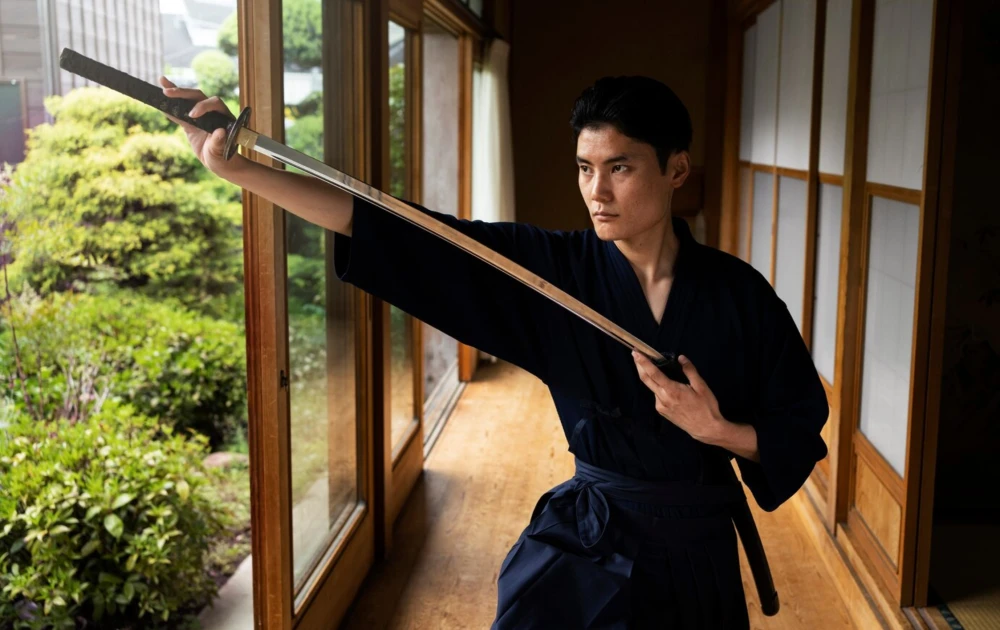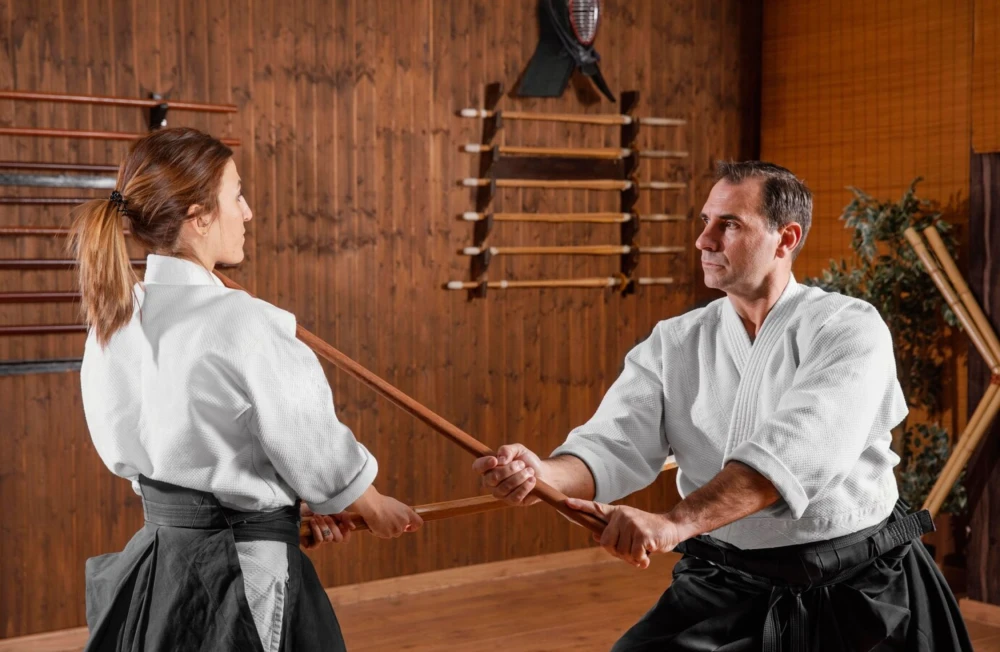An Introduction to Kendo, the Art of Bamboo Sword Fencing
March 1, 2024
Kendo, or "the way of the sword," is a modern Japanese martial art that descends from traditional swordsmanship. This discipline uses bamboo swords (shinai) and protective armor (bogu), focusing on both physical and mental discipline. Kendo is not just about learning to strike an opponent but also about personal development, respect, and perseverance.

Kendo embodies the samurai spirit, emphasizing courage, honor, and discipline.
The Philosophy Behind Kendo
Kendo's philosophy extends beyond mere physical training. It embodies the samurai spirit, emphasizing courage, honor, and discipline. Practitioners, known as kendoka, are taught to respect their opponents, their dojo (training hall), and their equipment as part of their spiritual and moral training. This philosophy is a cornerstone of kendo, reflecting the way kendoka approach life, facing challenges with grace and strength.
As we delve into the art of kendo, it becomes clear how traditional practices continue to hold their significance and adapt to our contemporary lifestyle. Engaging with sports and cultural traditions offers a unique perspective on the enduring legacy of disciplines like kendo in today's society. For those interested in exploring a wide range of sports and traditions that bridge the gap between past and present, 1xBet serves as a comprehensive platform, providing insights into how these age-old practices influence and shape modern sports culture.
Core Principles
The core principles of kendo include:
- Respect - Kendoka learn to honor their opponents and teachers, fostering an environment of mutual respect.
- Discipline - Regular training instills discipline, essential for mastering kendo techniques and for personal growth.
- Perseverance - Kendoka are encouraged to push their limits, embodying the spirit of never giving up.
Significance in Modern Japan
In modern Japan, kendo is more than just a sport or martial art; it's a way to connect with Japanese culture and history. While rooted in ancient samurai practices, kendo has evolved into a discipline that balances martial skills with character development. Schools and universities across Japan include kendo in their curriculum, emphasizing its educational value.
Kendo's Impact on Society
Kendo teaches values that are highly regarded in Japanese society, such as respect, perseverance, and discipline. These principles are not only applicable in the dojo but also in daily life, making kendo a tool for personal development.
Learning Kendo
For those interested in learning kendo, it's essential to understand that it requires commitment. Training involves learning basic strikes and postures, sparring techniques, and the philosophical aspects of the art.
Steps to begin:
- Find a dojo - Research to locate a dojo that suits your needs.
- Equipment - Initially, you might only need comfortable clothes, but eventually, you'll need to invest in a shinai and bogu.
- Start with basics - Focus on mastering basic techniques and etiquette.

The shinai is the bamboo sword used in training and matches.
The Significance of Equipment
In kendo, the shinai and bogu are not merely tools but extensions of the kendoka's body and spirit. Proper care and respect for these items are crucial aspects of training.
List of essential gear:
- Shinai - The bamboo sword used in training and matches.
- Bogu - Protective armor that includes a helmet (men), gloves (kote), body armor (do), and waist protector (tare).
Challenges and Rewards
Kendo training is rigorous and demanding, often testing one's limits. However, the rewards are significant, including improved physical fitness, mental clarity, and a deep sense of fulfillment.
Kendo offers more than just physical benefits; it's a journey of self-discovery and personal growth. Kendoka learn to face challenges with courage and resilience, valuable lessons that extend far beyond the dojo.
Kendo's Global Community
While deeply rooted in Japanese culture, kendo has gained a global following, connecting people across different cultures and backgrounds through the shared values of respect, discipline, and mastery of the sword. This worldwide community participates in international competitions, workshops, and seminars, promoting cross-cultural understanding and friendship. The International Kendo Federation (FIK) plays a pivotal role in this global spread, overseeing international standards for practice and competition, ensuring the spirit of kendo is maintained worldwide.
The Role of Competitions
- World Kendo Championships: Held every three years, this is the most prestigious event in the kendo community, attracting competitors from around the globe.
- Exchange programs: Many dojos participate in exchange programs, hosting kendoka from other countries, fostering a sense of global camaraderie.
The Significance of Kata
Kata, pre-arranged forms practiced with a partner, are an essential aspect of kendo training. These forms teach the fundamental principles of swordsmanship, including timing, distance, and the correct application of force. Kata practice is a meditation in motion, emphasizing the flow and precision of movements, and is considered the soul of kendo, connecting practitioners to the martial art's historical roots.
Key aspects of kata practice:
- Precision and grace: Each movement in kata is performed with deliberate precision and grace, reflecting the depth of kendo's artistry.
- Spiritual discipline: Kata practice is not only a physical exercise but also a form of spiritual discipline, enhancing the practitioner's focus and mindfulness.
Conclusion
In conclusion, kendo is a deeply enriching practice that offers physical, mental, and spiritual growth. Its significance in modern Japan lies not only in its cultural and historical roots but also in the values it instills in practitioners. As a martial art, kendo teaches discipline, respect, and perseverance, principles that are as relevant today as they were centuries ago. For those drawn to the way of the sword, kendo offers a path to not just mastering a martial art, but also developing a stronger, more disciplined, and respectful self.
Related content
